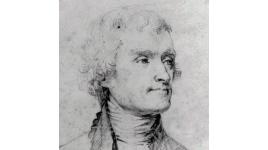Landscape Information
Envisioned by Thomas Jefferson and founded in 1817, Central College was sited on 43 acres of farmland west of Charlottesville. Jefferson laid out the Academical Village, the university’s core, in 1825 as a neoclassical quadrangle enclosing a 200-foot, terraced lawn on three sides. The Rotunda anchors the north, while the eastern and western edges are lined with symmetrical dormitories punctuated by larger pavilion buildings. Behind each pavilion lay working gardens enclosed in curved brick walls and flanked by another row of dormitories. These gardens were redesigned beginning in 1948 by Alden Hopkins and Donald H. Parker in a Colonial Revival style.
The university’s first Superintendent, William Abbott Pratt, employed a Picturesque sensibility in the 1850s, introducing Gothic Revival architectural elements, curving walks, and informal plantings of deciduous and evergreen trees.
Classical order was reintroduced in 1895, when Stanford White enclosed the south end of the Lawn with three Beaux-Arts buildings. In 1913, Warren H. Manning offered a City-Beautiful inspired campus plan, largely unbuilt, with new building clusters on axes extending from the Academical Village.
Following World War II, rapid campus expansion moved away from the historic core. The ten McCormick Road dormitories came first, followed by the North Grounds in 1968. New satellite campuses, sometimes Modernist in style, continued, with separate centers for the schools of law, business, and arts and architecture. Today’s Charlottesville campuses comprise 1682 acres and more than 16,000 students.
The Academical Village was designated a National Historic Landmark in 1971 and a UNESCO World Heritage site in 1987.
















